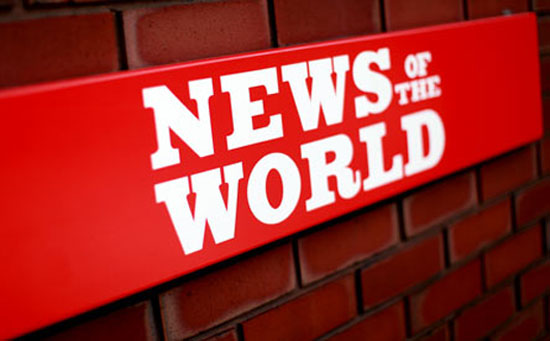
OPINION: It must have seemed natural to treat phone hacking as a helpful device to obtain stories, writes ROY GREENSLADE
Soon after Rupert Murdoch acquired the News of the World, in 1969, he sacked its editor, Stafford Somerfield, and joked afterwards: “He was too nasty, even for me.” Now he has sacked the newspaper because, though this time he isn’t joking, it had become too nasty – even for him.
Closing a newspaper that is still profitable and still the market leader, selling more than 2.6 million copies every Sunday, is a breathtaking and unprecedented act.
It is a remarkable response to the wave of public anger that was threatening to engulf his global media empire with the potential to destabilise a crucial bid to expand further by acquiring total ownership of the satellite broadcaster BSkyB.
Old 19th century media has been sacrificed for new. A British institution has been consigned to the dustbin of British media history. Though Murdoch’s hand has been forced, and he would not have wanted to be its axeman, it is feasible to argue that the paper had run into the sand. It had passed its sell-by date.
It has been losing sales steadily for at least half a century, falling year by year from its astonishing 8.4 million peak in 1950, when it laid rightful claim to be the world’s biggest-selling paper.
From the moment of its launch in 1843, it set out to appeal to the masses, originally with news about lurid crimes that went unreported elsewhere and later with titillating material about sex. In its post-war heyday, it also won a formidable reputation for its comprehensive and detailed sports coverage.
Bearing the slogan “All human life is there”, the paper cast itself as the champion of the British working class. It spoke to them and for them with an ebullient confidence unmatched by rivals. It also recognised their vices, unashamedly publishing material no other paper would dare to touch, most notably the details of court cases detailing illicit sexual liaisons.
Scandalous reports
Readers were not always buyers. It was claimed that the rich sneaked around in their servants’ quarters to take a peek at the scandalous reports.
Part of the paper’s essential mix was a sort of op-ed page devoted to serious political and social features. Among its contributors were archbishops and senior politicians, including Winston Churchill when he was prime minister.
That was in the period when it was still a broadsheet. It didn’t make the switch to tabloid format until 1984, and then only reluctantly because sales were falling swiftly away. By that time the News of the World had already become infamous for running kiss-and-tell stories, such as those of Christine Keeler, the woman at the centre of the Profumo scandal, and the popular actress Diana Dors.
It had also pioneered a form of journalism that involved its reporters exposing the activities of prostitutes and concluding their articles with the line: “I made my excuses and left.”
Looking back, this can now be seen as tame stuff compared with modern tabloid fare. Indeed, it was the rise of the paper’s sister publication, the Sun , that can be seen as the death knell for the News of the World .
In order to retain its audience, the paper became sleazy rather than saucy. In order to obtain exclusive material it dared to use increasingly dodgy methods, moving into the dark arts of subterfuge, entrapment, covert filming and agents provocateurs. In so doing, some of its staff grew technically proficient and it must have seemed only natural to treat phone hacking as just another helpful device to obtain stories.
The pressure was always on to get scoops as sales slid away. And from the early 1990s onwards, a middle-ranking group of executives for whom ethics was no more than a county to the east of London assumed control in the newsroom.
They are the architects of the paper’s downfall. Then again, the commercial imperative was really set by those above them, the editors and also the chiefs, from Murdoch down. In some senses, the use of phone hacking was nobody’s fault and everybody’s fault. It was an inevitable mistake by a paper that had lost its way and was running fast into a journalistic cul de sac.
Perhaps the old News of the World , and its reputation as the amusing, unsleazy bad boy of British journalism, is best summed up by an anecdote about one of its veteran reporters, a man who always wore a bowler hat and looked as if he had stepped from a stockbrokers’ office. He once arrived on a woman’s doorstep, tipped his hat and said: “I’m from the News of the World.” She asked: “Can you prove it?” And he replied: “But madam, I’ve just admitted it.”
Roy Greenslade is professor of journalism at London City University. He is a former editor of the Daily Mirror and a media commentator for The Guardian. This article is republished from the Irish Times.




